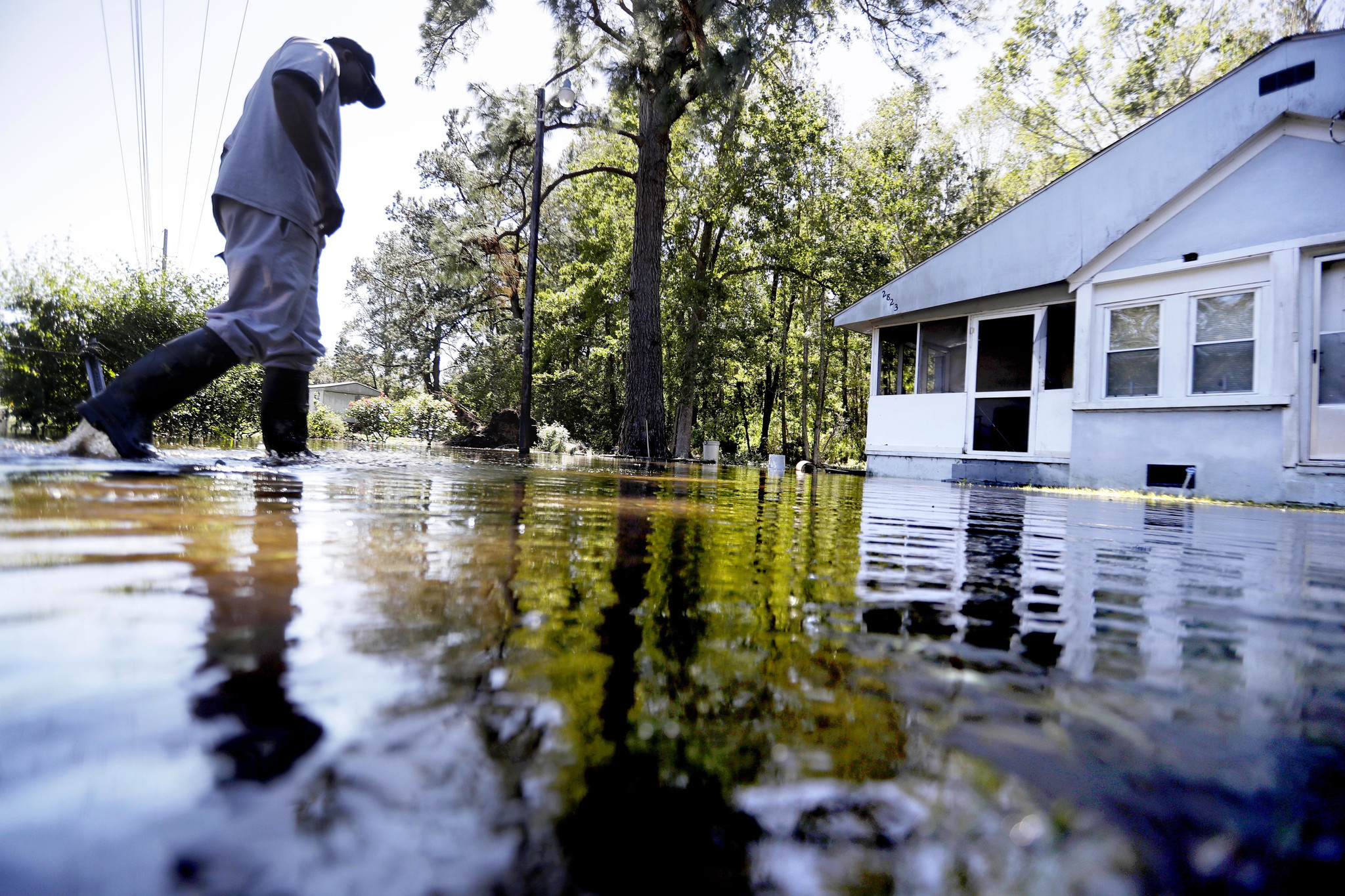POWER OUTAGES
North Carolina utilities have estimated that as many as 2.5 million state residents could be left without power, the state’s Department of Public Safety said. More than 22,600 people were housed in 150 shelters statewide, including schools, churches and Wake Forest University’s basketball arena.
Officials in New Bern, which dates to the early 18th century, said over 100 people were rescued from floods and the downtown was under water by Friday afternoon. Calls for help multiplied as the wind picked up and the tide rolled in.
“These are folks who decided to stay and ride out the storm for whatever reason, despite having a mandatory evacuation,” city public information officer Colleen Roberts said. “These are folks who are maybe in one-story buildings and they’re seeing the floodwaters rise.”
New Bern resident Dan Eudy said he and his brother were awakened on Thursday night by the sound of a boat ramming against his front porch. They ventured out in life jackets into waste-deep water to tie the boat and another floating by to a tree.
Eudy and his family stayed home in New Bern partly to protect their house. “And we had no belief it would be as significant an event as it was,” he said. “This is a 500- or 1,000-year event.”
The White House said on Friday that President Donald Trump had spoken with state and local officials, assuring them the federal government was prepared to help. Trump planned a visit to the region next week.
The storm was expected to move across parts of southeastern North Carolina and eastern South Carolina on Friday and Saturday, then head north over the western Carolinas and central Appalachian Mountains early next week, the NHC said. Significant weakening was expected over the weekend.
About 10 million people could be affected by the storm.
Florence was one of two major storms threatening millions of people on opposite sides of the world. Super Typhoon Mangkhut was expected to hit an area in the Philippines on Saturday that would affect 5.2 million people.













Comment